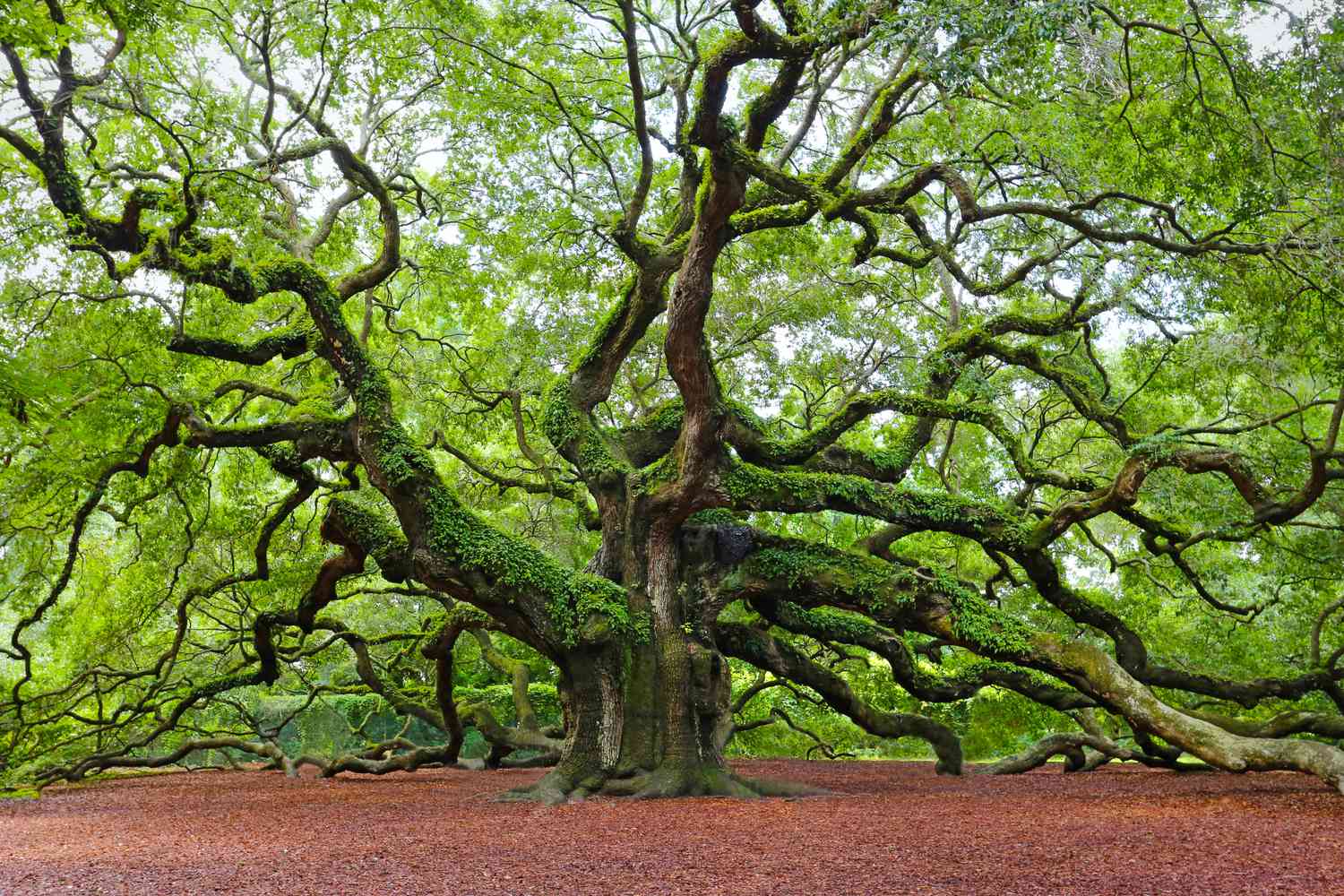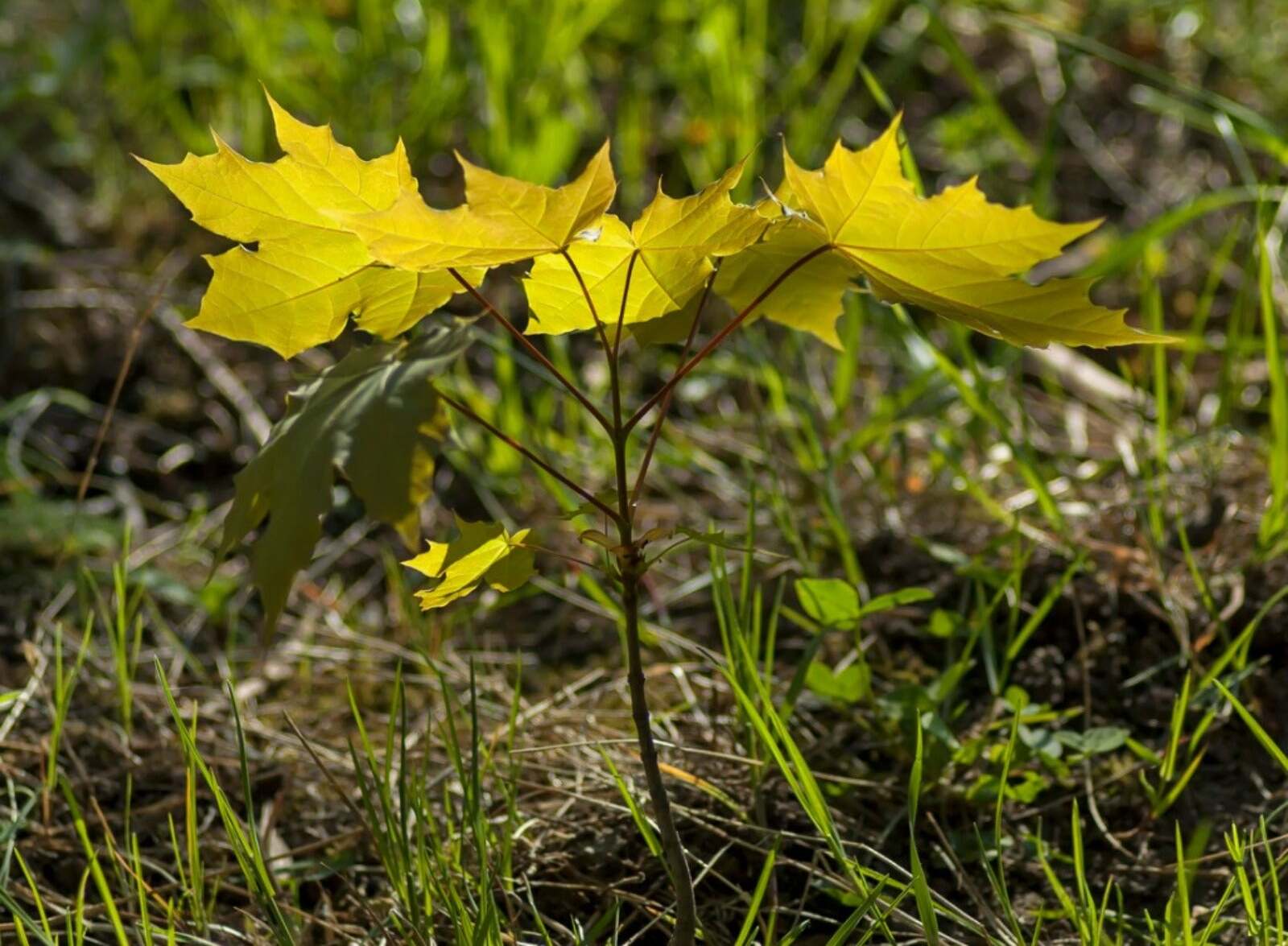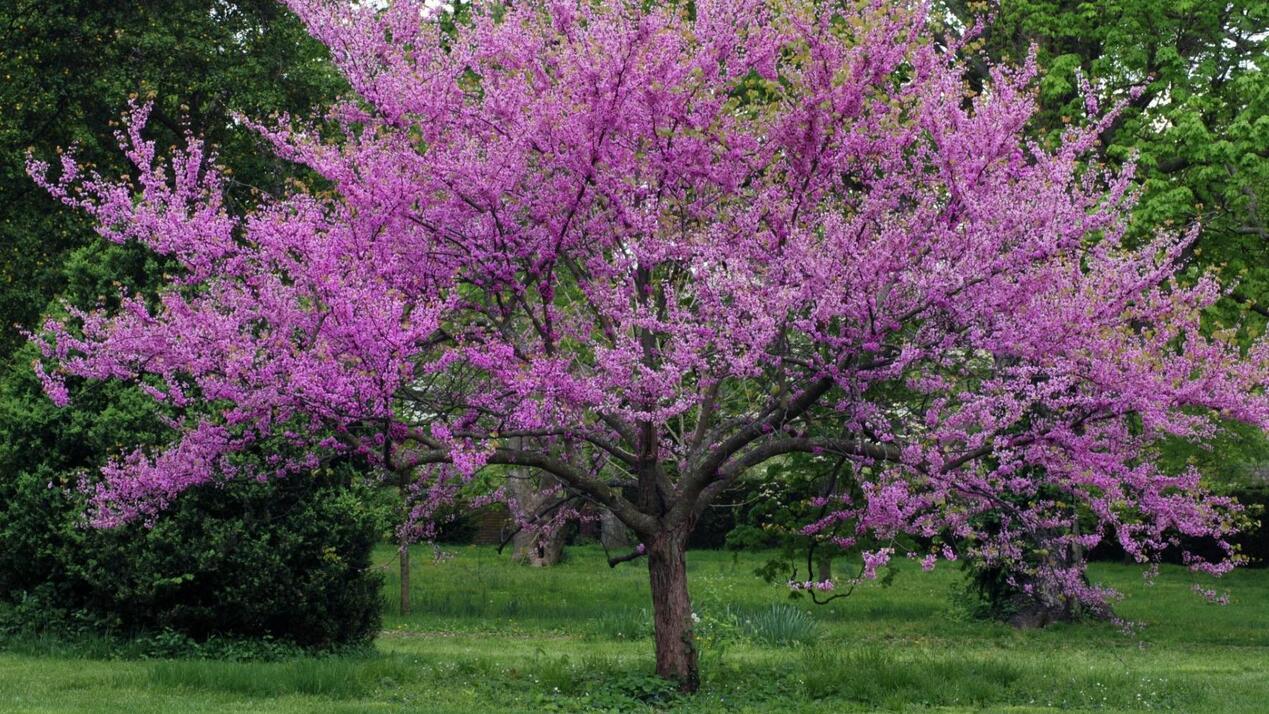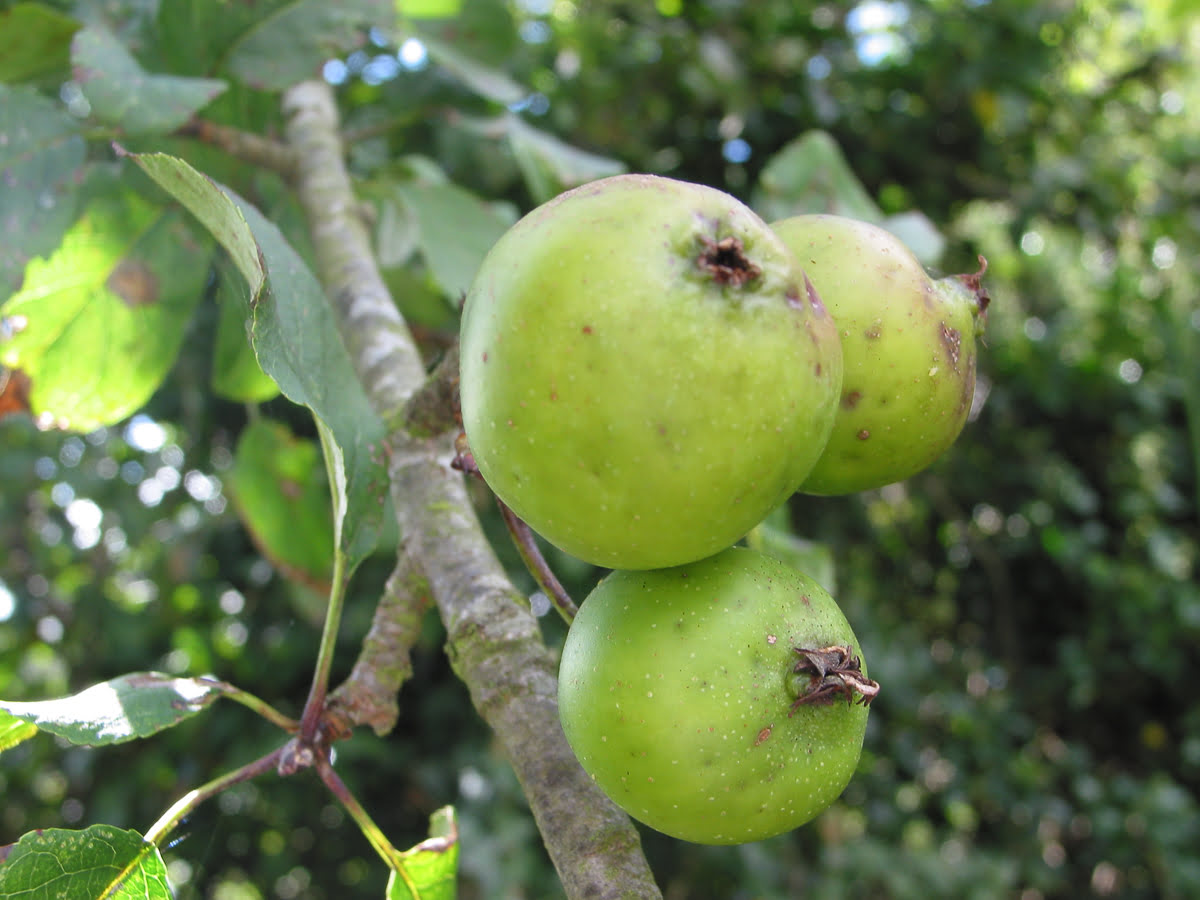Home>Gardening News and Trends>Latest News>How Old Do Oak Trees Get


Latest News
How Old Do Oak Trees Get
Modified: February 10, 2024
Discover the latest news on how old oak trees can get and explore the secrets of their longevity.
(Many of the links in this article redirect to a specific reviewed product. Your purchase of these products through affiliate links helps to generate commission for Chicagolandgardening.com, at no extra cost. Learn more)
Table of Contents
Introduction
Oak trees are undeniably one of the most iconic and majestic trees in the natural world. They are renowned for their strength, longevity, and captivating beauty. These towering giants have stood the test of time and have been revered for centuries for their contributions to the environment and human civilization. In this article, we will delve into the fascinating world of oak trees and explore the factors that contribute to their lifespan, the oldest recorded oak trees, how they age, and the effects of environmental and human impacts on their longevity.
With their ability to withstand harsh weather conditions, diseases, and even human intervention, oak trees are known for their incredible resilience. They have become a symbol of endurance and strength, and have been used as a source of inspiration and admiration in literature, art, and folklore.
Not only are oak trees visually striking, but they also play a vital role in the ecosystem. These trees provide habitat, shade, and food for a wide range of animals and insects. Additionally, they contribute to the overall health of the environment by purifying the air, conserving water, and reducing soil erosion.
Understanding the lifespan and aging process of oak trees is crucial for their conservation and sustainable management. By gaining insights into the factors that influence their longevity and recognizing the signs of aging, we can better protect and care for these magnificent specimens.
In the following sections, we will explore the factors that affect oak tree lifespan, uncover the oldest recorded oak trees, and delve into the aging process of these majestic trees. We will also discuss the environmental and human impacts that can influence their longevity.
Factors Affecting Oak Tree Lifespan
The lifespan of an oak tree can vary depending on several factors. These factors can include species, genetics, environmental conditions, and the overall health of the tree.
Species: There are numerous species of oak trees, each with its own average lifespan. While some oak species have been recorded to live for several hundred years, others may only survive for a few decades. For example, the Quercus robur, commonly known as the English oak, can live for up to 1,000 years, while the Quercus palustris, or pin oak, typically has a lifespan of about 80 to 120 years.
Genetics: Just like humans, the genetics of an oak tree can influence its lifespan. Some trees may naturally have stronger immune systems or be more resistant to diseases and pests, allowing them to live longer. Conversely, trees with genetic weaknesses may be more prone to diseases and have a shorter lifespan.
Environmental Conditions: The environment in which an oak tree grows plays a significant role in its lifespan. Adequate sunlight, water, and nutrient availability are crucial for the tree’s growth and development. Oak trees that are exposed to adverse conditions such as drought, flooding, or extreme temperatures may have a shorter lifespan.
Overall Health: The overall health of an oak tree is a critical factor in determining its lifespan. Trees that are stressed, damaged, or infected by diseases or pests may have a shorter lifespan compared to healthy trees. Regular tree care, including pruning, fertilization, and pest control, can help maintain the health of oak trees and prolong their lifespan.
It’s important to note that these factors are not mutually exclusive, and they can interact with one another. For example, a tree that is genetically predisposed to withstand environmental stressors may have a longer lifespan than a tree of the same species with weaker genetics.
While oak trees are known for their longevity, it’s essential to understand that not all oak trees will live for centuries. Instead, the combined influence of species, genetics, environmental conditions, and overall health will determine the lifespan of an individual tree.
Now that we have covered the various factors contributing to oak tree lifespan, we will explore some fascinating examples of the oldest recorded oak trees in the next section.
Longevity of Oak Trees
Oak trees are renowned for their remarkable longevity, with some species capable of living for centuries. The lifespan of an oak tree is influenced by several factors, as mentioned in the previous section. Let’s explore some examples of the oldest recorded oak trees to get a better understanding of their longevity.
One of the most celebrated examples of an ancient oak tree is the “Methuselah Oak.” This oak tree, located in Fredville Park, Kent, England, is estimated to be over 1,500 years old. It has become a symbol of resilience and strength, standing tall through the centuries as a testament to the enduring nature of oak trees.
Another impressive oak tree is the “Angel Oak” in South Carolina, USA. This enormous live oak tree is believed to be between 400 and 500 years old and is considered one of the oldest living oak trees in the country. With its sprawling branches and massive trunk, the Angel Oak has captivated visitors for generations.
The “Major Oak” in Sherwood Forest, England, is steeped in history and folklore, as it is believed to be the tree under which Robin Hood and his Merry Men took shelter. Estimated to be around 800 to 1,000 years old, the Major Oak stands as a living testament to the enduring legends of the famed outlaw.
These remarkable examples demonstrate the potential longevity of oak trees and their ability to withstand the test of time. However, it’s important to note that not all oak trees reach such advanced ages. The average lifespan of an oak tree can range anywhere from a few decades to a few centuries, depending on various factors.
It is worth mentioning that accurate determination of an oak tree’s age is challenging, as it often requires specialized techniques such as dendrochronology (using tree rings) or radiocarbon dating. These methods provide valuable insights into the age of oak trees and the historical events they may have witnessed.
As we have seen, oak trees have the potential for remarkable longevity, but it’s important to respect and care for these ancient beings to ensure their continued existence. In the next section, we will explore how oak trees age and the signs that indicate their maturation and potentially their decline.
Oldest Recorded Oak Trees
Throughout history, numerous oak trees have stood the test of time and become famous for their age and grandeur. These ancient trees serve as living monuments, captivating visitors and inspiring awe with their rich history and majestic presence. Let’s explore some of the oldest recorded oak trees that have become legends in their own right.
The “Bowthorpe Oak” in Lincolnshire, England, is believed to be one of the oldest living oak trees in Europe. Estimated to be over 1,000 years old, this magnificent tree has a girth of almost 40 feet and has become a local landmark. Despite its age, the Bowthorpe Oak continues to thrive, attracting tourists from far and wide who come to marvel at its ancient beauty.
In the United States, the “Jomon Sugi” in Yakushima, Japan, holds the title for one of the oldest living oak trees in the world. Estimated to be between 2,170 and 7,200 years old, this ancient tree has witnessed the rise and fall of civilizations and stands as a testament to the enduring power of nature.
Another notable oak tree is the “Granit Oak” in the Białowieża Forest, located on the border between Poland and Belarus. This impressive tree is estimated to be over 600 years old and is considered one of the oldest oaks in Europe. It serves as a reminder of the rich biodiversity and cultural heritage of the ancient forest.
These examples highlight the extraordinary lifespan of certain oak trees and their ability to endure for centuries. They have weathered storms, witnessed historical events, and become symbols of strength and resilience. Each ancient oak tree carries a unique story that is deeply intertwined with the surrounding environment and human history.
It’s worth noting that identifying and accurately dating the oldest oak trees can be challenging. Determining their age often requires specialized techniques, including dendrochronology, carbon dating, or historical records. These methods help to unveil the hidden history of these majestic beings and offer insights into the past.
As we can see, the oldest recorded oak trees serve as living pieces of history. They remind us of the magnificence and longevity of these remarkable trees and inspire us to protect and preserve their habitats for future generations to appreciate.
In the next section, we will delve into how oak trees age and the signs that indicate their maturation and potentially their decline.
How Oak Trees Age
Oak trees, like all living organisms, undergo a natural aging process. Understanding how oak trees age can provide valuable insights into their growth patterns, structural changes, and overall health. Let’s explore the stages of an oak tree’s life and how it matures over time.
1. Sapling Stage: The life of an oak tree begins as a sapling, emerging from an acorn or seedling. During this stage, the tree focuses on establishing a strong root system and developing a sturdy trunk. The sapling grows rapidly, putting on height and branching out gradually.
2. Maturity Stage: As the oak tree reaches maturity, its growth rate slows down. During this stage, the focus shifts to canopy development and the production of acorns for reproduction. The tree has a defined crown and branches that continue to extend and thicken, providing shade and habitat for various organisms.
3. Senescence Stage: In the later stages of an oak tree’s life, signs of senescence, or aging, become more evident. The growth rate slows significantly, and the tree may begin to show signs of decline. The canopy may thin out, and branches may become more brittle and prone to breakage. However, even in this stage, healthy oak trees can continue to thrive and contribute to the ecosystem.
4. Decay Stage: As an oak tree continues to age, it becomes more susceptible to decay. Fungi and other organisms may take advantage of weakened areas, causing rot and deterioration. Hollow trunks and branches are common in older oak trees, providing shelter for wildlife and adding to the tree’s unique aesthetic appeal.
It’s important to note that the aging process of oak trees can vary depending on species, genetics, and environmental conditions. Some oak trees may age gracefully, maintaining their structural integrity and vitality for centuries, while others may experience a more rapid decline.
To properly care for aging oak trees, regular monitoring and maintenance are essential. Pruning dead or damaged branches, assessing the health of the tree, and providing necessary nutrients or treatments can help prolong the life and vitality of older oaks.
By understanding how oak trees age, we can appreciate the beauty and resilience of these magnificent trees throughout each stage of their life cycle. Now, let’s move on to the next section to explore the signs that indicate aging in oak trees.
Signs of Aging in Oak Trees
As oak trees age, they undergo various changes that indicate their maturation and potentially their decline. Recognizing the signs of aging in oak trees is crucial for their health and proper care. Let’s explore some of the common signs that indicate an oak tree is aging.
1. Thinning Canopy: One of the first signs of aging in oak trees is a thinning canopy. As the tree matures, the density of leaves in the crown may decrease, resulting in more sunlight filtering through the branches. This natural thinning is a part of the aging process and is not necessarily a cause for concern unless it happens rapidly or is accompanied by other signs of decline.
2. Bark Cracks and Fissures: As oak trees age, the bark may develop cracks and fissures. These fissures are a natural occurrence caused by the expansion and contraction of the bark as the tree grows. While some cracks are normal, extensive or deep cracks can indicate underlying issues such as disease or decay.
3. Brittle Branches: Older oak trees may develop branches that become increasingly brittle and prone to breakage. These branches may snap off more easily in wind or during storms. Regular tree inspections and pruning can help remove weak or dead branches, promoting overall tree health and reducing the risk of branch failure.
4. Hollow Trunks: Hollow trunks are a common sign of age in older oak trees. As the tree ages and undergoes decay, the interior may hollow out, providing habitat for various organisms. While hollow trunks can weaken the overall structure of the tree, it doesn’t necessarily mean the tree is in immediate danger, as the remaining outer wood can still provide support.
5. Reduced Growth Rate: As oak trees age, their growth rate slows down significantly. This diminished growth can be observed in the length of new shoots and the overall expansion of the tree’s canopy. It’s important to note that slow growth alone is not indicative of an unhealthy tree, as long as the tree remains in good overall condition.
6. Leaf Discoloration: Older oak trees may exhibit changes in leaf coloration. This can include yellowing, browning, or spotting of leaves. While some degree of leaf discoloration is normal, especially during the autumn season, excessive or persistent discoloration throughout the year can indicate underlying issues such as nutrient deficiencies or disease.
Recognizing these signs of aging in oak trees is essential for their continued care and preservation. Regular tree inspections, maintenance, and appropriate tree management practices can help mitigate the effects of aging and prolong the life of these majestic trees.
In the next section, we will discuss the environmental and human impacts that can influence the lifespan of oak trees.
Environmental and Human Impacts on Oak Tree Lifespan
Oak trees, like all living organisms, are influenced by their environment and interactions with humans. Both natural and human-induced factors can affect the lifespan of oak trees. Let’s explore some of the key environmental and human impacts that can influence the longevity of these majestic trees.
1. Environmental Impacts: Oak trees are resilient, but they can be significantly affected by environmental factors. Some of the main environmental impacts on oak tree lifespan include:
- Climate Change: Changes in temperature, precipitation patterns, and extreme weather events associated with climate change can stress oak trees and impact their ability to thrive.
- Environmental Pollution: Air pollution, soil contamination, and chemical pollutants can have detrimental effects on the health and lifespan of oak trees.
- Loss of Habitat: Deforestation, urbanization, and habitat fragmentation can reduce the available space for oak trees to grow, impacting their survival and overall lifespan.
- Natural Disasters: Natural disasters such as wildfires, hurricanes, and floods can damage or destroy oak trees, affecting their lifespan and regenerative capabilities.
2. Human Impacts: Unfortunately, human activities can also have significant impacts on oak tree lifespan. Some human-induced factors that affect oak trees include:
- Deforestation and Land Development: Clearing of forests and land development for agriculture, infrastructure, or urbanization can result in the removal of oak trees and their habitats.
- Improper Tree Care: Improper pruning, excessive use of chemicals, or lack of regular care can weaken oak trees and make them more susceptible to diseases and pests.
- Pollution and Contamination: Pollution from industrial activities, chemicals, and improper waste disposal can harm oak trees and disrupt their natural processes.
- Tree Damage and Removal: Accidental damage caused by construction, vandalism, or unauthorized tree removal can significantly impact oak trees and shorten their lifespan.
Understanding and mitigating these impacts is vital for the conservation and preservation of oak trees. Implementing sustainable land management practices, protecting natural habitats, and promoting responsible tree care can help safeguard the lifespan of these magnificent trees.
Oak trees are remarkable beings that contribute immensely to our ecosystems and provide numerous ecological benefits. By recognizing and addressing the environmental and human impacts that can affect their lifespan, we can ensure the continued existence of these invaluable tree species.
In the concluding section, we will summarize the key points covered in this article and emphasize the importance of preserving and cherishing oak trees for future generations.
Conclusion
Oak trees are truly remarkable beings, known for their strength, longevity, and vital contributions to the environment. In this article, we explored the factors that influence oak tree lifespan, including species, genetics, environmental conditions, and overall health. We also learned about some of the oldest recorded oak trees, which have become living testaments to the endurance and grandeur of these majestic trees.
As oak trees age, they go through various stages, from saplings to maturity, and eventually senescence. Recognizing the signs of aging in oak trees, such as thinning canopies, bark cracks, brittle branches, hollow trunks, reduced growth rates, and leaf discoloration, is crucial for their care and maintenance.
Both environmental and human impacts can influence the lifespan of oak trees. Climate change, environmental pollution, habitat loss, natural disasters, deforestation, improper tree care, pollution, and tree damage are just some of the factors that can affect these majestic trees. Understanding these impacts and taking steps to mitigate them are essential for preserving and protecting oak tree populations.
Preserving oak trees is not only important for their aesthetic and ecological value but also for the countless benefits they provide. These trees offer shade, habitat for wildlife, carbon sequestration, air purification, erosion control, and cultural significance. Conserving oak trees ensures the sustainability of ecosystems and the well-being of future generations.
By promoting sustainable land management practices, protecting natural habitats, implementing responsible tree care, and raising awareness about the importance of oak tree preservation, we can safeguard these magnificent trees for years to come.
Let us cherish and honor oak trees for their resilience, beauty, and the vibrant role they play in our natural world. Together, we can ensure that future generations have the opportunity to witness the awe-inspiring majesty of these ancient giants.









